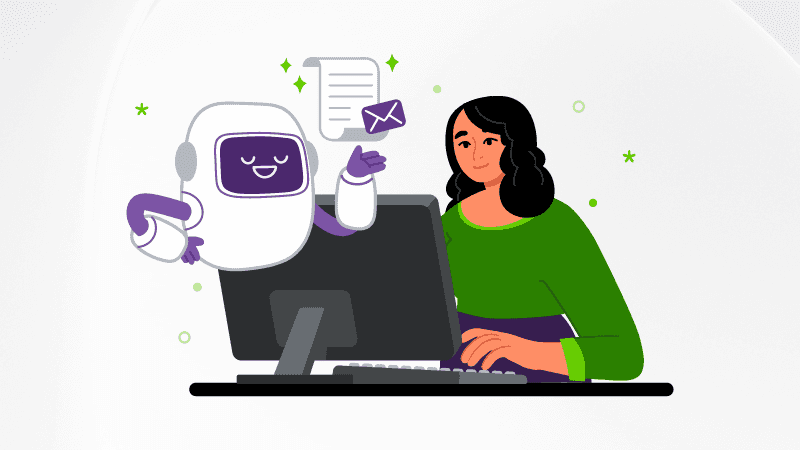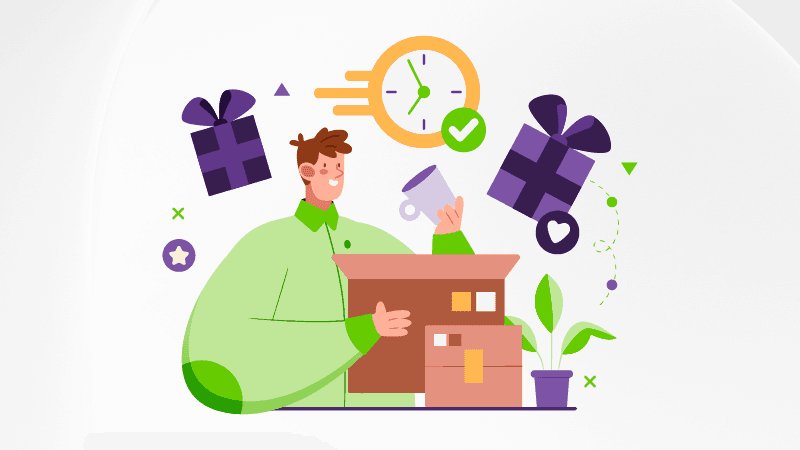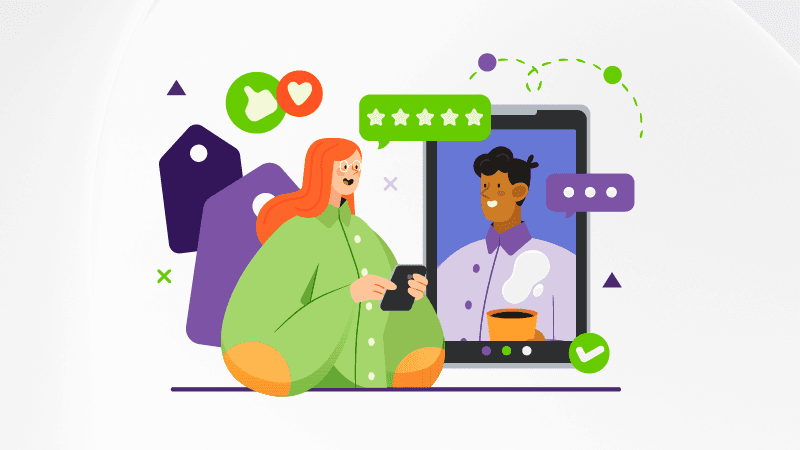Realizing the potential of AI-driven personalization

For too long, personalization hasn’t quite lived up to its promise or potential. Where consumers expected thoughtful experiences tied to their unique points of view, too often they were left underwhelmed. Before long, the illusion of personalization vanished. Customers wanted personalization and what they got was segmentation.
That’s all changing though. In 2025, brands are increasingly using artificial intelligence (AI) to personalize touchpoints all along the customer journey, nimbly adapting and improving experiences in innumerable ways with each successive interaction. Advancements in AI, machine learning (ML) and natural language processing have created a new context for personalization in which businesses can ingest and analyze customer data at enterprise-scale, all in an effort to not only understand customer sentiment and intent, but to respond meaningfully. The next frontier in personalization is setting brands up to be predictive and signal to their customers that they have taken the time to understand them on a one-to-one basis.
Now is the time to differentiate your business through personalization. As David Caudle, vice president of strategic transformation at TELUS Digital, put it on a recent episode of Questions for now: “If you’re not organizing your business around the customer and personalizing customer moments, you're falling behind other brands.” The companies that realize the current opportunity will set themselves up to satisfy customer expectations and lift their most important metrics. TELUS Digital research reveals that 62% of survey respondents value personalization over speed in customer experience, meanwhile findings from McKinsey show that personalization can reduce customer acquisition costs by as much as 50%, lift revenues by 5-15% and increase marketing ROI by 10-30%.
Read on to explore the transformative power of AI-driven personalization in 2025 and the ways in which you can evolve beyond basic segmentation and prepare your organization for this new era of customer experience.
The next frontier of customer experience personalization
As we’ve already alluded to, the personalization of today — and certainly of tomorrow — goes beyond basic segmentation. “Five years ago,” Caudle recounted, “we thought of segmentation, customer segmentation, micro-segmentation and we looked at that as personalization. But today, with the technologies that are available, the bar is just set so high.” He later added that the next frontier of personalization extends past the point of purchase and instead involves “all aspects of the customer lifecycle journey.”
David Caudle, vice president of strategic transformation at TELUS Digital, speaking about personalization in the customer journey on the Questions for now episode: “The era of AI-driven personalization is here. What now?”No matter how high that bar has been set, brands must rise to the challenge and deliver upon the promises of AI-driven personalization. But to achieve a worthwhile goal, first you must define it.
AI-driven personalization is the process of using advanced technologies and strategies to gather and analyze customer data across channels in order to understand customer intent and preferences and subsequently deliver seamless, valuable experiences.
Key characteristics of AI-driven personalization
When implemented effectively, AI-driven personalization demonstrates several distinct characteristics that set it apart from traditional approaches.
AI-driven personalization is:
- Responsive: Advanced personalization systems react in real time to a customer’s immediate context and most recent actions. Examples could include adjusting an ecommerce website’s featured items based on the current weather in the customer’s location, tailoring product recommendations in response to items just added to a cart or modifying the tone of a chatbot conversation based on the customer’s latest sentiment analysis. The key is that personalization isn’t merely informed from a static, historical dataset, but rather that the experience a customer receives is the result of their current context. According to Salesforce, nearly two-thirds (64%) of customers expect tailored engagement based on past interactions — and responsive personalization delivers on this expectation instantaneously.
- Predictive: Sophisticated AI and ML algorithms can analyze patterns in customer behavior to anticipate needs and preferences before they’re explicitly expressed. Pulling this off demonstrates empathy, as it can convey to your customers that you are taking the time to understand their needs and add value to their experience. According to Caudle, customer experience (CX) market leaders today are able to understand “intent, the stage that a customer is at and [they are] able to model the various types of interactions.”
- Seamless: With the right technical setup, the most effective brands enable omnichannel experiences to flow naturally across all channels and devices, demonstrating an understanding that customer journeys aren’t always linear. When personalized experiences are seamless, customers can start researching on mobile, continue on desktop, speak with a service representative and visit a physical location — all while receiving consistent, personalized experiences that build upon each other.
- Continuous: Each customer interaction provides new data that feeds back into the model, enabling ongoing refinement and improvement. Continuous improvement ensures that personalization becomes more accurate and valuable over time, leading to increasingly satisfying customer experiences. On the aforementioned podcast episode, Mark Abraham, managing director and senior partner at BCG and co-author of Personalized: Customer Strategy in the Age of AI, explained, “Every time I have an interaction, it should be better than the one before, which means you need to be running lots of experiments in the background to distill down my preferences and the preferences of customers like me.”
How to personalize your customer experience in 2025
To move from definition to action, organizations need a clear roadmap for implementing advanced personalization. Broadly speaking, there are six steps that CX leaders must follow in order to seize the present opportunity.
1. Assess your current personalization capabilities
Whether you’re at the beginning of your personalization journey or you’ve been honing your efforts for years, to truly personalize at scale, your first step should be to take stock of your current capabilities. Begin by mapping and assessing your practices, tech stack and responsibilities. Having a clear understanding of where you are in the present will enable you to identify gaps and formulate a plan to get to where you want to be. As part of your assessment, be sure to look at relevant industry benchmarks so that your understanding accounts for where you are in comparison to your competitors. In ecommerce, for example, two-thirds (67%) of businesses have made personalization a “top priority” with plans to invest further, per research from MasterCard.
2. Identify high-impact personalization opportunities
Focus on solving specific customer problems rather than implementing technology for its own sake. As Abraham explained, “You have to solve a problem.” He then went on to cite Spotify as an example: “They’re great at personalization because they want to find the best way to connect you with the music you love.” Spotify has been consistently identified as a leader in personalization, using sophisticated recommendation engines to generate bespoke playlists based on the listening habits of its individual users. The key here is to think about customer intent and to deliver added value. Prioritize opportunities based on customer value, technical feasibility and business impact. Consider the entire customer journey, from initial engagement through post-purchase support, identifying moments where personalization can make a meaningful difference.
3. Develop a data strategy
Your personalization efforts are only as good as your data. Focus on collecting and organizing customer behavior data, transaction history, interaction data and contextual information. Establish strong data governance practices, including data security, privacy compliance, quality standards and access protocols. Of course, you’ll need to be transparent with your customers from the outset with regard to the data you are collecting and what you intend to use it for. “Customers will only provide you data when there’s a clear exchange of value,” asserted Abrahram. “In fact, we see the rates go up from 30 to 90% when you clearly explain why [you’re asking for it].”
4. Invest in the right technology stack
Success requires the right tools: a robust customer data platform, AI and ML capabilities, real-time analytics and a content management system that can deliver personalized experiences at scale. Focus on integration capabilities — your technology must work seamlessly together through API connectivity while maintaining strong security protocols. This can be complex, and you want to be led by need, rather than by the latest tech. For many brands, forming productive partnerships with outsourcing providers that have experience and capabilities in CX and AI can be invaluable to the process of setting up personalization infrastructure. Ideal providers will have a rich technology partner ecosystem, enabling client brands to access technology and necessary expertise without the risks typically associated with buying or building technology.
5. Establish clear accountability
In the context of customer experience personalization, Abraham shared that “one of the best things that brands can do is to name a leader who has, not ownership over all the resources because it will be a cross-functional effort, but ownership over the accountability for the enterprise, the roadmap to deliver it, and, frankly, acts as the voice of the company on how well we're doing on that path.” It’s a good idea to have an experienced leader who can look at the personalization journey from end-to-end and rally team members around a shared vision of success. “Companies that have that clear leader in place have seen much faster progress,” Abraham added.
6. Implement continuous testing and optimization
Start small and scale gradually. Bal Mahal, senior product manager, intelligent automation at TELUS Digital, recommended a methodical approach on the Questions for now episode titled: Is automation the key to more human, personalized experiences? Speaking about how technology like applied AI and automation can be implemented into personalization programs, she said, “It’s best to start with simple, [with] small automations at first so you can really see the end-to-end impact and then refine as you go.” Establish clear metrics around customer satisfaction, revenue impact and operational efficiency, and regularly monitor your progress. “It’s important that you create a holistic plan that will align with your business goals and it's also important that you have clear objectives around automation. You have to establish a dedicated structure for automation within the organization.”
Get the help you need to scale your personalization program
Worthwhile and simple are two different things.
Deloitte found that, relative to brands with low personalization maturity, brands that excel at personalization are 48% more likely to have exceeded their revenue targets and 71% more likely to report improved customer loyalty. Further, research from McKinsey shows that this level of personalization often delivers a 1-2% lift in total sales and reduces marketing and sales costs by 10-20%.
At the same time, defining your strategy, accessing your current capabilities and building what you need to deliver this type of personalization can all be exceedingly complex. There’s a lot to think through, and the fact that this form of personalization is emergent means that it’s rare to have the experience in-house to pull it off.
That’s where partnership comes in. TELUS Digital can bring the right combination of technology, data capabilities and skilled talent to help you differentiate via personalization. As the AI-fueled experience partner of choice, we help approximately 600 global brands win customer loyalty at all touchpoints. If you’re ready to deliver memorable experiences across the customer journey, contact our sales team today.




